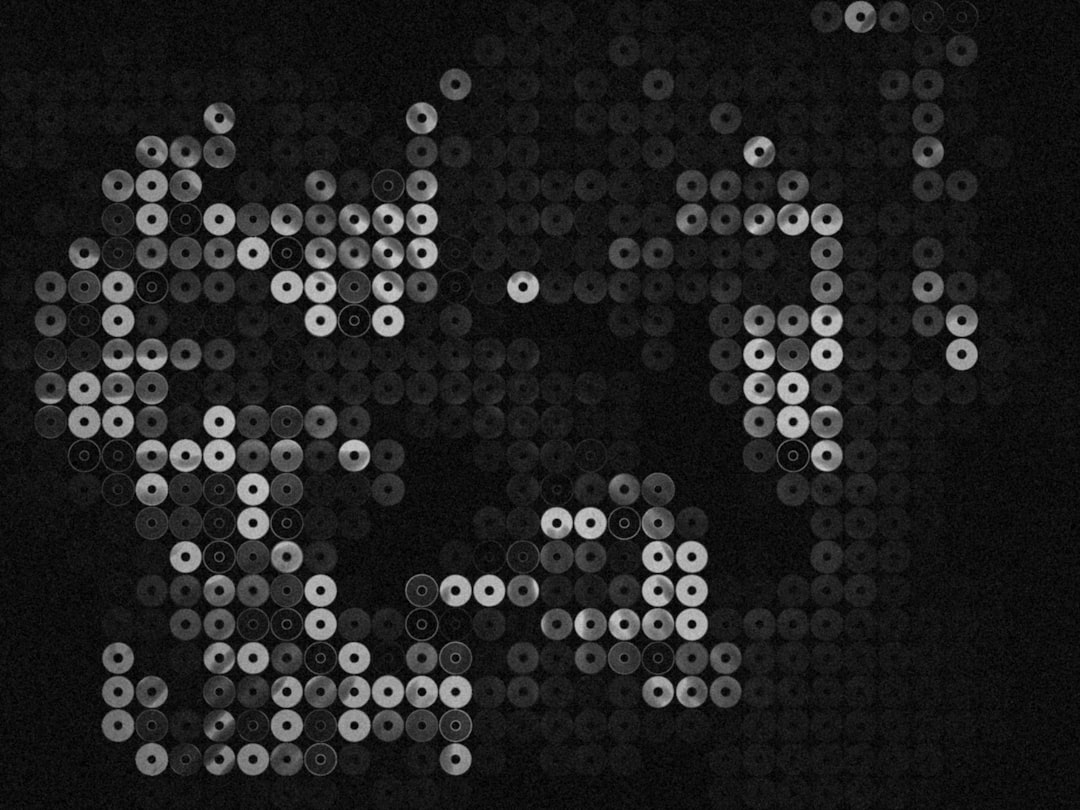

Engage prospects with a scan and streamline customer engagement with FREE QR code marketing tools by Sona – no strings attached!
Create a Free QR CodeFree consultation

No commitment

Engage prospects with a scan and streamline customer engagement with FREE QR code marketing tools by Sona – no strings attached!
Create a Free QR CodeFree consultation

No commitment
QR codes have evolved from a novelty to a strategic powerhouse in bridging offline engagement with online action. For promotional product suppliers, QR codes represent a seamless, interactive, and highly effective way to boost conversions from custom promotional items and branded merchandise without requiring an app download or complex setup.
Many suppliers face mounting frustration with missed sales opportunities. Customers may explore corporate giveaways or branded merchandise, but without a simple path from product to action, their interest is not captured. The ability to instantly connect physical marketing merchandise such as corporate giveaways or advertising specialties to digital destinations has created opportunities for higher customer engagement, real-time campaign tracking, and scalable lead acquisition. Yet for many, high-value prospects remain untracked or anonymous, resulting in lost business that never makes it into the CRM.
With QR codes, every piece of branded merchandise becomes a measurable touchpoint and a direct line to lead capture, product information, contests, or reorder pages. By using QR-enabled solutions, promotional product suppliers can systematically overcome these challenges, ensuring leads are not only generated but also tracked and converted, making it easy to maximize ROI, optimize segmentation, and stay at the forefront of marketing technology trends.

QR codes bridge the gap between physical touchpoints and digital outcomes, making it easier to achieve real business goals like generating quality leads, speeding up ordering, and tracking campaign performance. When QR codes are placed on high-visibility items that your buyers already use and share, you turn passive interest into instant action and measurable results.
Suppliers frequently lose prospects because engagement on physical assets goes unmeasured, or high demo interest never translates into follow-up when no form is submitted. This gap between offline and online channels results in valuable prospects being overlooked. By embedding QR codes in the merchandise and materials that already anchor your customer journey, you remove friction, collect first-party data, and assist sales with timely insights.
Technology now allows suppliers to automate the connection between physical assets and their digital funnels, reducing manual effort and ensuring high-intent engagement is identified and nurtured. Platforms like Sona QR’s product overview support code creation, routing, and tracking, while integrations with CRMs and ad platforms close the loop between scans and revenue.

QR codes address several critical challenges for promotional product suppliers by linking offline branded merchandise with actionable digital experiences. They also create a durable system for attribution in a channel that has historically lacked visibility.
In many supply scenarios, a branded item is both a product and a marketing vehicle. Without QR codes, that vehicle rarely sends back signals. With QR codes in place, physical goods become the starting point for lead capture, product education, post-purchase service, and measurable follow-up.
Whether applied to trade show handouts, direct mail, or new product launches, QR codes help promotional product suppliers ensure no interaction goes unnoticed and that follow-ups are timely, relevant, and data-driven. Over time, this improves lead quality, shortens sales cycles, and clarifies which products and placements deserve more investment.

QR codes can be configured to support nearly any supplier objective, from lead capture to reorders. The right format depends on the desired action, the physical context, and your data needs. For promotional product suppliers, the most common goal is to turn a low-friction scan into a high-value next step, like requesting a quote or reordering.
Dynamic QR codes are particularly useful in this vertical because they allow you to change content post-print and track engagement by asset. Static codes still have a role for evergreen content such as a fixed brochure PDF or a permanent product page. The choice should align with how often you intend to update destinations and how much data you need to collect.
With Sona QR, you can generate these formats, set dynamic destinations, and manage performance in one place. For supplier-specific workflows, pair web link codes with short forms such as Google Forms QR, prefilled product references, and UTM parameters that attribute each scan to a SKU, sample kit, or event.

Identifying strategic QR placements solves persistent supplier challenges, such as anonymous traffic, forgotten giveaways, and lost post-event opportunities. The goal is to put scannable prompts where intent peaks, then capture that intent with a relevant destination. For promotional product suppliers, that usually means packaging, trade environments, and buyer-facing collateral.
Think of every physical touchpoint as a potential onramp to your funnel. If a buyer touches, reads, or carries it, a QR code can shorten their journey from curiosity to conversion. The most reliable placements sit at high-visibility edges, are easy to scan without awkward angles, and spell out the value of scanning in plain language.
Through targeted, contextual placements, suppliers can accelerate the buyer journey and minimize missed touchpoints. The outcome is higher data capture at the top of the funnel, smoother movement to pricing and configuration, and more timely sales conversations.

Persistent pain points for suppliers, including missing high-funnel leads and failing to capture intent at key customer moments, can be addressed with smart QR implementations. The best use cases connect a physical item to a digital action that feels natural in the moment and valuable to the buyer.
The following examples map directly to common supplier workflows and buyer behaviors. Each can be launched quickly with dynamic codes, then optimized using performance data and A/B testing.
These use cases help suppliers systematically surface both anonymous and known interest and maintain ongoing dialogue with customers at every stage. They also simplify training for field teams since the call to action is printed and consistent across assets.
One of the biggest challenges for promotional product suppliers is retargeting prospects who engaged in the physical world but never filled out a form. A scan is an intent signal: it tells you what was scanned, where, and when. With a coordinated QR strategy, those signals can build segmented audiences for precise follow-up.
Start by mapping your journey stages to distinct QR codes and destinations. Then define segmentation rules based on use case, placement, and timing. Integrate scan data into your CRM and ad platforms so that scans trigger nurtures, alerts, and audience creation without manual work.
With Sona QR, each QR code becomes a smart entry point into your funnel. Scan data and downstream behavior can be synced to Sona.com for identity resolution, helping you retarget based on real-world behavior rather than assumptions. The result is less wasted spend and higher conversion rates as messaging aligns with demonstrated interest.
For most suppliers, a key challenge lies in creating unified, data-driven campaigns across physical and digital touchpoints. QR codes act as connectors between channels where tracking is traditionally siloed. When every print asset and giveaway can kick off a trackable digital session, your multichannel approach becomes cohesive and measurable.
Integration starts with consistent creative and clear next steps. The same CTA language should appear on the physical item, the landing page, and the follow-up communications. Consistency reduces cognitive load and nudges prospects smoothly from offline curiosity to online action.
QR codes serve as the offline onramp to your digital marketing engine. They also unlock a new layer of data collection across channels that were once difficult to measure. With a centralized platform like Sona QR, you can manage all your codes, monitor performance, and sync scan data with your CRM and ad platforms for end-to-end attribution.
A solid execution plan ensures your QR campaigns move beyond novelty to become dependable growth levers. Start small with one or two high-impact use cases, then scale as you learn what works in your environment and audience.
Before you launch, align your internal teams on goals, naming conventions, and integration requirements. Decide who owns creative, landing pages, tracking, and follow-up. When responsibilities are clear, campaigns run smoother and insights are easier to act on.
Begin by anchoring on a business outcome. For promotional product suppliers, common goals include capturing high-intent leads at events, boosting repeat orders from packaging scans, and collecting post-purchase feedback to inform upsell campaigns. Frame your choice in terms of a specific friction point that QR can remove.
Choose between static and dynamic QR codes based on how much flexibility and measurement you need. Static codes fit fixed destinations like a permanent brochure PDF. Dynamic codes allow link updates, A/B tests, and detailed analytics tied to the individual code.
Good design is not just aesthetic; it is functional. Your code must be scannable in real-world conditions and your CTA should set expectations. Prioritize contrast, quiet zone spacing, and adequate size based on distance and placement.
Distribute your codes where they will meet the most relevant eyeballs. For suppliers, that includes event assets, packaging, showroom displays, and direct mail. Each placement should map to a next step that matches the context.
Measurement turns QR from a tactic into a strategy. Use dashboards that show scans by time, location, device, and asset, then connect those signals to downstream outcomes like form fills, meetings booked, and orders placed.
A short post-mortem after every campaign helps institutionalize what you learn. Document scan-through rates, top-performing placements, and barriers that appeared in the field. Share the highlights with sales and operations so they can adjust tactics and talking points for the next cycle.
Measurement challenges have long plagued promotional product suppliers, particularly when it comes to linking offline engagement to revenue. QR codes now make it possible to track the full journey from the moment someone scans a code to the moment they purchase or reorder.
The key is to go beyond scan counts. You need to know which asset was scanned, who scanned it, what they did next, and whether that interaction influenced pipeline. When QR activity is tied to accounts and contacts in your CRM, you can finally attribute revenue to your physical marketing investments.
With Sona QR and Sona.com, you can capture real-world engagement, resolve identities where possible, and tie scans to revenue through multi-touch attribution. This makes QR a first-class citizen in your performance marketing stack rather than an isolated experiment.
Scaling QR programs requires a blend of operational rigor and creative deployment. As you expand, aim for consistent naming, dependable integrations, and a steady cadence of testing across products, placements, and offers.
Focus on tips that align with your most common media and workflows. For suppliers, that includes catalogs, packaging, event materials, and showroom signage. Tie each scan to a clear call to action that fits the context, then automate the next step so momentum is not lost.
Two creative ideas to consider: add a QR code to sample kit lids that opens an artwork upload form for faster approvals, and include a QR on invoices that allows corporate buyers to reorder the same set in a single step. Both convert administrative moments into revenue moments.
Start creating QR codes for free: create your account. Generate dynamic codes in minutes and connect scans to your CRM and ad platforms without heavy implementation work.
QR codes are more than a shortcut. They represent a transformative strategy for promotional product suppliers, solving frustrations of missed prospects, anonymous traffic, and untapped follow-up. When smart QR strategies are implemented, every branded gift, giveaway, or marketing item becomes a digital, measurable conversion point that captures intent and feeds it directly into your funnel.
Modern approaches make it possible to unlock opportunities that previously disappeared into the offline void. With dynamic codes, strong creative, and integrated analytics, you can attribute revenue to physical assets, build richer audiences for retargeting, and optimize spend with confidence. The suppliers that embrace QR as a core capability will convert more interest, accelerate sales cycles, and outpace competitors still relying on guesswork.
By strategically leveraging QR codes, promotional product suppliers can finally address long-standing pains around lost leads, incomplete data, and invisible engagement. Every touchpoint, from swag to packaging, can now be measured, segmented, and optimized for better business outcomes. With Sona QR and Sona.com, you have the tools to manage codes at scale, unify scan data with your CRM, and turn real-world engagement into reliable pipeline and revenue.
QR codes have revolutionized the promotional product suppliers industry by turning every branded item into a powerful, trackable marketing asset. They enable suppliers to drive customer acquisition, enhance client engagement, and deliver personalized experiences that boost conversion rates. Imagine effortlessly identifying which promotional products resonate most with your audience—and instantly optimizing campaigns to maximize impact.
With Sona QR, creating dynamic, trackable QR codes is quick and seamless. Update campaigns in real time without the need for costly reprints, connect every scan to actionable insights, and directly link your offline promotions to measurable revenue growth. No guesswork, just data-driven success.
Start for free with Sona QR today and transform your promotional products into high-converting sales tools that drive lasting business growth.
QR codes on promotional products create measurable touchpoints that boost customer engagement, enable real-time campaign tracking, generate quality leads, and connect offline marketing to digital actions without requiring app downloads.
Select a supplier that offers QR-enabled solutions with dynamic code creation, tracking capabilities, CRM integrations, and supports use cases aligned with your workflows such as lead capture, product authentication, and reorder automation.
High-visibility items that buyers frequently use and share, such as packaging, trade show swag, corporate giveaways, brochures, and point-of-sale displays, are effective placements for QR codes to maximize scan rates and conversions.
Track metrics like scans per items distributed, scan-to-form completion rates, website visits from scans, lead captures, and reorder rates, while connecting scan data to CRM and revenue attribution models for a full view of campaign impact.
Creative uses include embedding QR codes on sample kit lids for artwork uploads, on invoices for easy reordering, on trade show badges for lead capture, and on packaging to offer instant reordering or product support.
Use Sona QR's trackable codes to improve customer acquisition and engagement today.
Create Your FREE Trackable QR Code in SecondsJoin results-focused teams combining Sona Platform automation with advanced Google Ads strategies to scale lead generation

Connect your existing CRM

Free Account Enrichment

No setup fees
No commitment required

Free consultation

Get a custom Google Ads roadmap for your business






Launch campaigns that generate qualified leads in 30 days or less.
